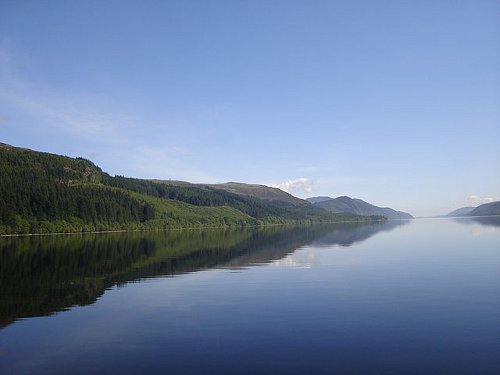
In 1972 Canadian scientists R.W. Sheldon and S.R. Kerr set out to reason out the number of monsters that occupy Loch Ness. Because the creatures are reportedly large and rarely seen, it follows that their numbers must be small. (“It has been suggested from time to time that as the monsters are never caught it must therefore follow that they do not exist. This is both irresponsible and illogical.”)
By estimating the fish stock available in the loch, they determined that the total mass of monsters is between 3,135 and 15,675 kg. Taking the minimum monster size as 100 kg (“anything smaller is not suitably monstrous”), they estimate that the loch contains between 1 and 156 monsters. The high end of this range seems unlikely; and since monsters have been reported for centuries they’re probably breeding, which would require a population of at least 10.
Given the available quantity of fish and assuming a stable population, monsters weighing 100 kg would have to die at a rate of at least 3 per year. Larger animals would die less frequently, and this seems likely since dead monsters are never found (and since the juveniles that must replace them are never seen). So it seems the lake probably contains a small number of large monsters, perhaps 10-20 monsters weighing up to 1,500 kg each and measuring about 8 meters, “a size that agrees well with observational data.”
“We would like to thank Kate Kranck for drawing our attention to this problem, because until she mentioned it we were unaware that monsters were a problem.”
(“The Population Density of Monsters in Loch Ness,” Limnology and Oceanography 17:5, 796–798)
